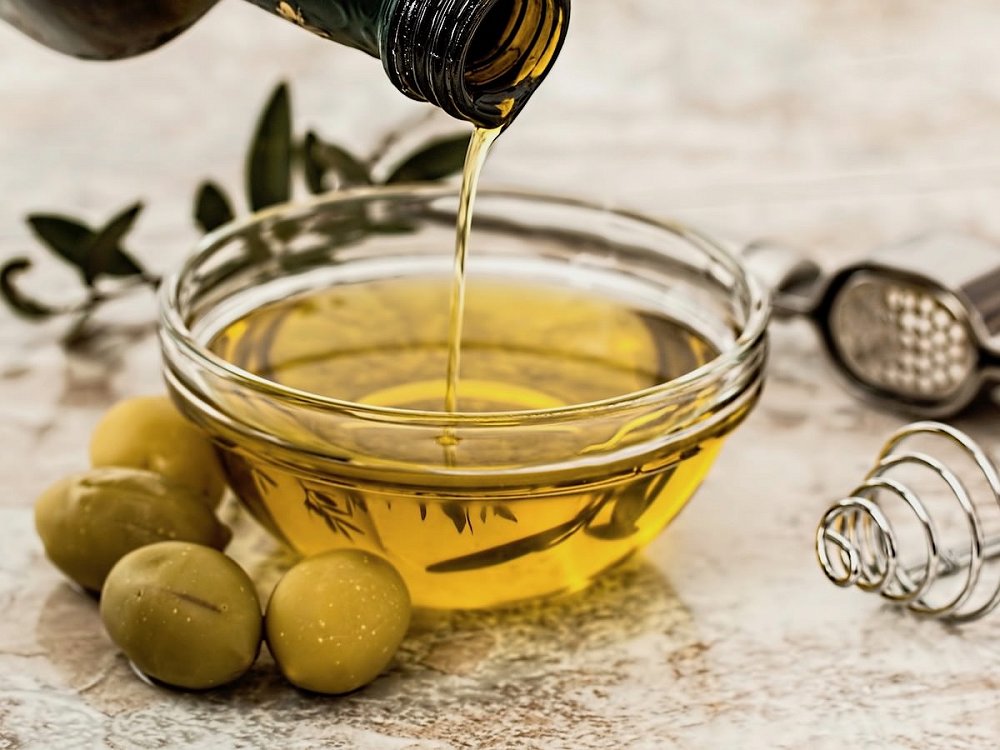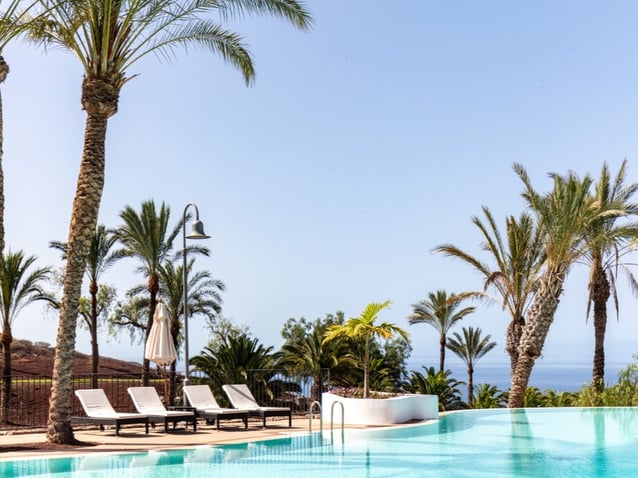
Today we dive into the delights of Spanish olive oil: both its flavour and its myriad of health benefits, recognized the world over. It’s not for nothing that it’s known as liquid gold. And even if the area’s extraordinary cuisine wasn’t the primary reason you took up residence here, it will inevitably become one of the anchors that keeps you in the Fortunate Isles.
As a resident of the Canary Islands archipelago, you’ll have learned that not all olive oils are created equal. But luckily for us, one with its origin near our residential community has gained international renown for its high quality and unique characteristics: an intense fresh aroma akin to newly-cut grass, which, together with light touches of spice and bitterness derived from the earth where the olives are grown, lend it qualities that come highly praised.
Gran Canaria is the Canary Island with the largest amount of terrain dedicated to the production of Spanish olive oil, especially in the southeast, which harvests a total of some 3 million kilos of olives per year. Just kilometres from Abama Luxury Resort is the production zone of Agüimes olive oil, an area in the southeast of Gran Canaria that has been a true pioneer in the employment of modern machines for the extraction of the olive oil and the promotion of the industry of olive cultivation. It has firmly taken back the reins of this ancient art that was in danger of extinction just a few years ago.
Agüimes olive oil, a unique product originating near your luxury home on Tenerife
In the small municipality of Agüimes, on Gran Canaria, extra virgin olive oil is considered the liquid gold of local and international cuisine. It has been produced here for the past decade and has certain peculiarities that render it unique in Spain. Called Caserío de Temisas, Aguïmes’s olive oil is uniquely marked by the olives from which it originates, as well as the way in which they are harvested and pressed.
Interested in its origins?
In 2001, the Rural Tourism Board of Agüimes, together with the Agency for Rural Development of the municipality, purchased a cutting-edge olive oil extraction machine. The production of olive oil has, of course, been carried out for centuries, but the activity had been all but abandoned for years and the olives themselves went to only one end product: the olives with mojo that we love to enjoy as an appetizer in this part of the world.
But in 2001, conscious of the climatic and geographic uniqueness of Gran Canaria produced by its temperature, altitude, wind, and soil, the Rural Development Agency decided to send a sample of their olives to the World Germplasm Bank at the Univeristy of Córdoba. After their analysis, they concluded that the olive trees were genetically unique, and pertained to the Verdiel de Huévar variety.
It was then that the farmers in the area reactivated this ancient practice, producing extra virgin olive oil with local olives, and adhering to the maximum quality standards when choosing their raw materials. But what makes Agüimes olive oil so special? Let’s find out.
What makes Agüimes olive oil so special?
First, we have to come back to the characteristics of the Canary Islands orography. Its major impact is that the olives can only be harvested by hand, as the land makes it impossible to use tractors equipped with vibration and collection basket kits. What’s more, the special microclimate, of which we have talked much at Abama, makes the trees at higher elevations fruit later in the season, while those close to the ocean are harvested first. This means that the harvest can commence much earlier than in the rest of Spain, at the end of August or beginning of September, and finishes in November or December.
Only when the olives have reached a precise maturity are they harvested and taken to the oil press. Between collection and the production of the oil there are barely 24 hours. This is the process known as “cold mechanical extraction”, and is what permits the oil to be catalogued as extra virgin and a gourmet product.
If you ask after Agüimes olive oil, locals will tell you that it is a mild oil with notes of tomato and fresh-cut grass, as well as an intense fruitiness and light bitterness. No doubt, then, about its ability to intensify the flavours of the products it accompanies.
Now that you’ve been introduced to the delicacy that is Spanish olive oil, time to use it in the preparation of your next dish at your luxury home on Tenerife. You can combine it with numerous other products typical of the area, killing multiple birds with one olive stone and reveling in the aromas and flavours of the Island of Eternal Spring. Or explore our many other posts about Tenerife food to keep your kitchen interesting.







